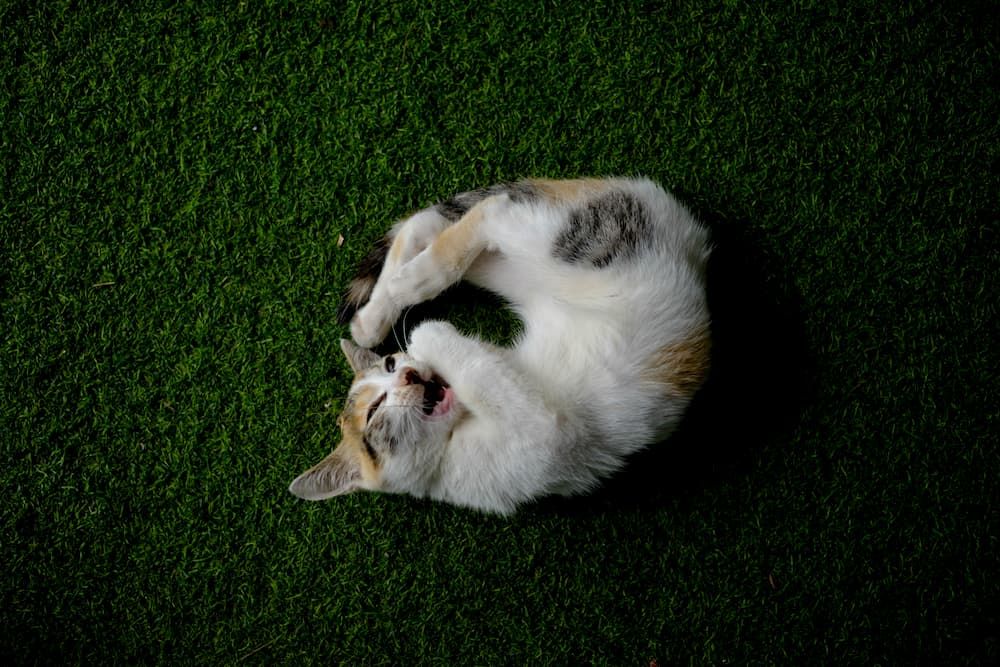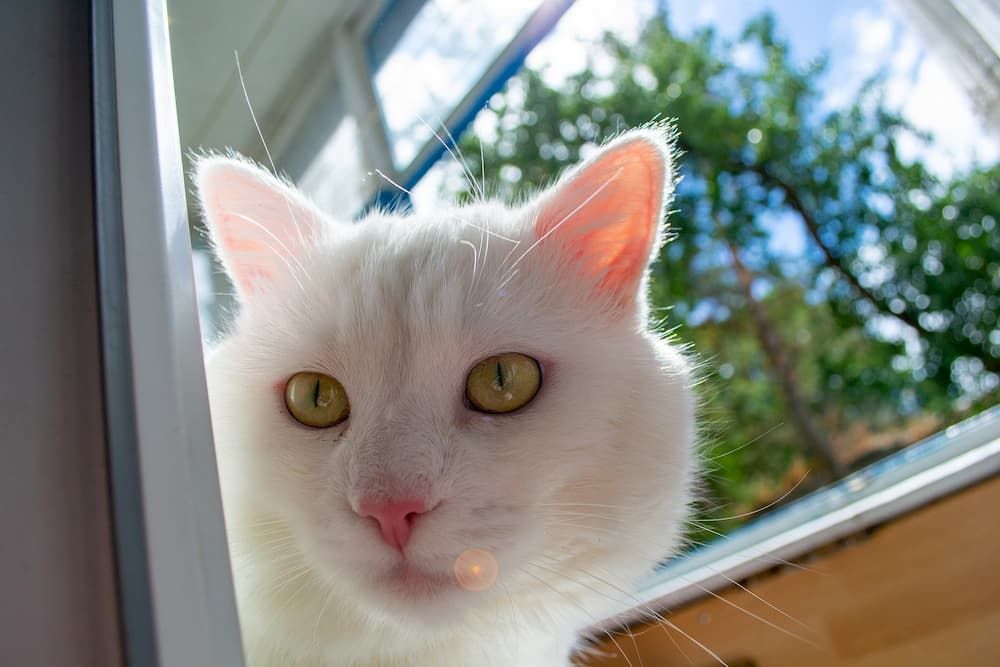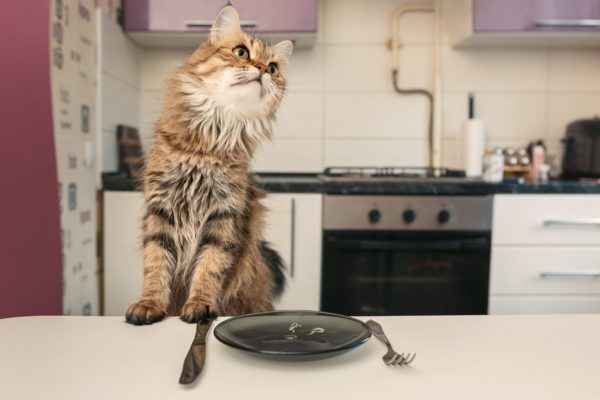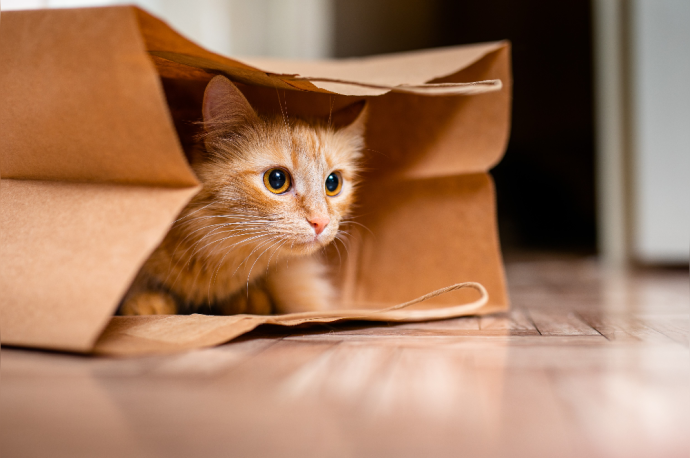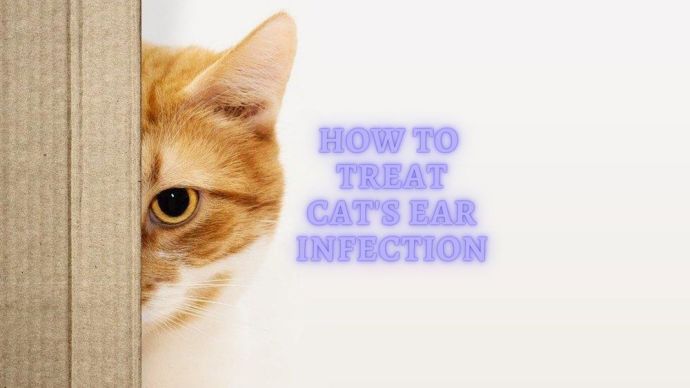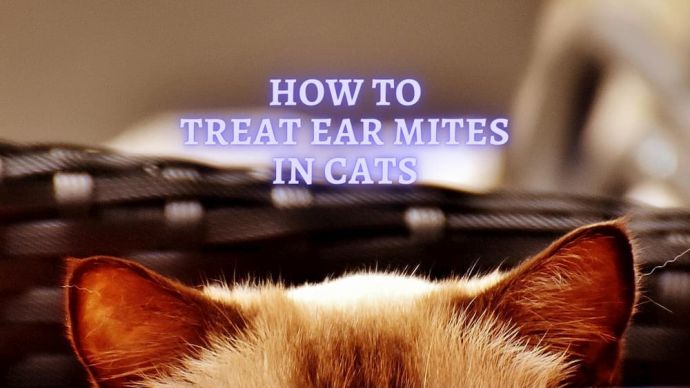How to Sedate a Cat Naturally? (Veterinary Advice)
Written by:
Author: Dr. Joanna De Klerk
Dr. Joanna de Klerk is a professional Clinical Veterinarian. Member of the Royal College of Veterinary Surgeons UK and a member of the South African Veterinary Association. Graduated with a Master of Science in Tropical Animal Medicine in 2018. Professional author, she has been writing in scientific journals, and also several book series. Joanna loves to enjoy time with her young daughter and family in her free time.
View all 10 articlesLearn about our editorial process and veterinary review board.
Viewed: 6396
Updated on: 07/21/2021
Cats are highly stressed animals, and if you have a feline friend in your house, you’re probably well aware of this. Little changes in life can make them significantly upset. This is not only a bad thing for their emotional well-being, but it can have implications on their general health too.
There are many ways to help your cat de-stress, and many of them involve making her feel more relaxed, maybe even sedated. While medications can be used for that, medications can have a toll on the system, particularly for cats with underlying kidney disease. Therefore, you might want to consider ways to sedate or calm your pet naturally. In this article, we will look at all the options and ways which should be avoided.
READ MORE: Is my cat is sick?
Why Should You Sedate Your Cat?
There are plenty of reasons why you might want your cat to be a bit more tolerant than normal, both for her sake and yours! These are some of the most common reasons why you might want to consider sedating your cat:
Travel
Cats hate traveling and can become nervous or anxious when placed in a cat carrier crate.
Handling
If you need to give your pet medication or you need to take your cat to the vet for an examination, your cat will be difficult to handle if she is feeling stressed.
Urinary Conditions
Some cats are prone to Feline Idiopathic Cystitis (FIC), a bladder condition triggered by stress. It is very uncomfortable for your cat and lowering stress and anxiety levels helps to prevent the condition or backpack.
Grooming
If you have a long-haired cat, grooming her should be a daily occurrence to prevent hairballs. This is not easy if your cat is not tolerant of the brush. In addition to this, clipping nails to a suitable length is also important to prevent injury, and many cats resent the handling.
Phobias
Thunderstorms and fireworks can upset cats and make them stressed.
Changes in Situations
One of the most common causes of stress is a change in the situation. This might be the introduction of a new pet, a new baby, moving to a new house, or even just having some builders come to the house. Cats can be a bit irrational!
RELATED ARTICLE: Kittens first shot
How Do You Sedate a Cat Naturally?
There are many options for natural sedatives. It’s important to note that many do not actually cause a sedative (sleepy) effect, but instead cause an intense calming result. If you need your cat to actually be almost asleep for a situation, then you will need to discuss this with your vet.
Before giving your cat anything which might make her sedate, first talk to your veterinarian anyway. This is particularly important if you have a cat with an underlying health condition. Natural does not mean safe, and the body still has to process natural products like medications. If your cat has an underlying health condition or is particularly young or old, the body’s natural processes will not work as well, which means even natural products can build up in the body to dangerous levels. So, if you are unsure whether something is safe for your cat, get your vet’s go-ahead first!
Pheromones
Feline pheromones are ways in which cats can chemically communicate with each other. They are released from glands on their cheeks, face, paws, and nipples to relay messages to other cats. This is why cats love to rub their heads on things or claw on items. They’re simply leaving a message for their friends.
Pheromone messages are picked up by cats using an organ called the vomeronasal organ, located in the roof of their mouth. If you’ve ever noticed your cat pull a strange face and inhale, this is probably them trying to identify some pheromones nearby.
Pheromones do not impact the body, so it is impossible to overdose on pheromones. They are also odor-free and will not have any effect on you.
Synthetic pheromones which relay calming messages to cats can be contained in a diffuser, room spray, or cat collar. This helps your cat feel calm around the house or in its immediate vicinity. Several types of pheromones can be compounded this way:
- F3 Facial Pheromones: These relay happy messages and are best for cats who need to feel safe and calm. These are best for cats who have a change in situation at the house, or who are traveling to the vets.
- Cat Appeasing Pheromone (CAP): These are produced by the mother around the nipples to help keep her kittens calm. These are best for cats with new social situations, such as a new pet in the house.
- Feline Inter digital Pheromones: These pheromones are produced by the foot pads. They are best for cats with behavioral problems who need encouragement to scratch or play in certain locations, away from furniture.
One of the most popular brands for feline pheromones is Feliway, which offers a variety of options for different pheromones and applications.
Catnip
Catnip is a type of herb which belongs to the mint family. There is a volatile oil in the leaves and flowers of catnip, which contains an active ingredient called nepetalactone. This is a neurotransmitter, which means it relays a chemical signal to the brain of your cat.
Most cats love catnip and will rub, lick, eat and sniff it. Approximately 60% of cats will become more active with catnip and will begin to roll around, become excited, and vocalize more. The other 40% (and sometimes later, the cats in the 60%) will then sit quietly in a sphinx-like position, become quiet, and become exceptionally calm.
Catnip is more likely to cause young cats (especially those under six months) to respond more passively, and older cats to respond more actively, but in the end, there are differences between every cat. Therefore, before using catnip to sedate your cat, you might want to try it out first, to make sure it doesn’t have the opposite effect!
Overdosing your feline friend might be something you are concerned about since your cat might appear as if she is on recreational drugs! But the good news is that in moderation, catnip is safe for your cat. If your cat ingests an excessive amount, the worst reaction she is likely to have is a mild bout of vomiting or diarrhea.
Valerian Root
Valerian root is a common herb that can be used for anxiety in many animals, and cats are certainly very sensitive to it. Valerian has both sedative and anti-anxiety effects on cats due to the active ingredient, actinidine. This attracts cats to it, much like catnip does. It is actually a type of insect pheromone, although not one from which cats can receive a message! It also contains other ingredients such as isovaleric acid, hesperidin, linarin, and valorenic acid. All of these enhance sleep.
Unfortunately, not all cats act the same to valerian. While many become extremely relaxed, others will become excitable, and a rare few become aggressive. So again, this is an option you might want to try out ahead of time to see how your cat responds to it.
Valerian root can overdose, and your vet must prescribe your cat an accurate dose based on her weight to ensure this doesn’t happen. Overdose can cause extreme lethargy, vomiting, and diarrhea.
Bach Flower Remedies
Bach Flower Remedies are old therapies that claim to help pets (and humans alike) with negative emotions. Bach Flower Remedies are made by infusing spring water with wildflowers by letting the petals steep in the sun or through boiling the water.
The original Bach Flower Remedies were invented by Dr. Edward Bach, a British physician who found 38 different healing flowers and plants which affect negative emotions.
There is very little scientific evidence that credits Bach Flower Remedies, however, they are very popular worldwide. There are both alcoholic and non-alcoholic drops available, but pets should always be given the non-alcoholic drops. This is because not only should pets never be given alcohol, but the alcohol which is commonly used to preserve the Bach Flower Remedies is grape-based gin, which causes acute kidney failure in cats.
Bach Flower Remedies are not dose-dependent. They work better over a period of time, and you can give them to your pet several times a day. Therefore, they might only be a good natural option to calm your cat if you can anticipate a stressful event coming in the future.
There are many types of Bach Flower Remedies on the market, but the original recipes that Rescue Remedy uses are considered the most effective. [1]
Calming Wraps
Wrapping up your cat tightly does wonders for calming them down, making them much easier to handle. This is a wonderful technique if your veterinarian might need to examine them, give a pill or clip their nails.
The easiest way to wrap up your feline friend is within a towel or blanket. It’s important to keep the towel wrapping process stress-free too, as bundling her up unexpectantly might in fact have the opposite effect. Therefore, following these steps is a fool-safe method:
- Open up your towel on a flat surface, in the position where you’d like your cat.
- Gently place your cat on the towel, several inches from the long side, and at least a foot from the towel’s short side on each side.
- Wrap the short side over your cat, so that the long side is around your cat’s neck, like a scarf.
- Make sure her whole body is covered, except her face.
- Bring the other side of the towel over her body in the other direction, ensuring the front wraps around over her front legs and snuggly under her chin.
- Fold it tightly under her shoulder area, making sure she is secure.
- You can then cuddle her close to your body with your elbow and lower arm, enabling someone else to do what they need to do.
The unfortunate thing about a towel wrap, though, is that you cannot keep your cat there for longer periods, and if you need to travel with your cat, they are just going to wriggle straight out of the towel as soon as you put them in the carrier crate. [2]
There is a solution though! You could consider investing in a ThunderShirt. Their patented design provides the same sort of pressure of a towel wrap, much like swaddling a baby or using a weighted blanket for anxiety. These wraps can be put on your cat for all anxious occasions, and instantly help your cat calm down.
L-Tryptophan
L-Tryptophan is a supplement that can be found in natural calming pet pills and in cat food specifically designed for cats with stress-related urinary issues (especially FIC).
When additional L-Tryptophan is added to the diet, it acts as a precursor for serotonin production. This is a neurotransmitter in the brain that has a sedative effect and decreases pain sensitivity, decreases aggressive behaviors, and increases happiness.
Hydrolyzed Milk Protein (Casein)
Calming supplements are available on the market which contains a natural ingredient made from hydrolyzed milk proteins. These proteins are called casein.
Casein is found in the milk of an animal and is known to relax newborns after breastfeeding. Luckily, it’s still effective in adults, particularly helpful against phobic behaviors, such as reactions to thunderstorms, fireworks, and strangers in the house.
The most popular product on the market is Zylkene.
What Should I Not Sedate My Cat With?
The internet is a scary place, and some information available is downright dangerous. If you browse the internet, you can come up with advice for all sorts of products that might sedate your cat and cause her major ill-health. These are common recommendations for sedation, which should never be considered:
Antihistamines
Diphenhydramine (Benadryl) is one of the most common antihistamines on the market, and while it is safe for fighting allergic reactions, it is not safe to give as a sedative. It is easy to overdose cats, and this can lead to seizures, coma, breathing difficulties, and death. Many cats also become very stressed when taking it, as cats resent the process of syringing it into the mouth. It is also not often a taste cats approve of!
Essential Oils
In humans, many essential oils are relaxing, and may even make you want to drift off to sleep. But essential oils for cats are a big no-no. Essential oils are easily absorbed through the skin or respiratory system and have to be processed by the liver to be removed from the body. The problem is, cats lack glucuronyl transferase, the enzyme required for the liver to break down the essential oils. As a result, they can build up to toxic levels in your cat’s body, resulting in neurological abnormalities, vomiting, tremors, breathing difficulties, and liver failure.
Chamomile
One of the most commonly recommended herbs to calm a cat is chamomile, however before you boil a brew, stop! Chamomile is toxic to cats and can cause vomiting, diarrhea, poor appetite, and allergic reactions. Chronic use can also lead to bleeding tendencies. This is because of toxic ingredients such as bisabolol, anthem acid, chamazulene, and tannic acid. Some of these can also be found in other teas too, so it’s best to avoid teas in general for your cat.
READ MORE: Best Cat Vitamins
What Can I Do If Natural Sedatives Don’t Work?
If your cat really needs to be sedated for something, speak to your vet. He can give your cat injectable sedation if a short procedure needs to be carried out in a stress-free way, such as grooming matts out of a long coat, clipping nails, or tending to a wound.
If your cat needs something more long-term, medication can be used to help calm her down. Commonly selective serotonin reuptake inhibitors (SSRIs) are used, which are a type of antidepressant. These can help improve the levels of serotonin in the brain and will make your cat feel more relaxed and happier.
If all else fails, cat behaviorists can be sought to come to your house and help with your cat’s general home-life scenario. They can give you great advice about making your cat’s life less stressful and bringing peace and serenity into your feline friend’s life again.
Article Sources:
- “Bach Flower Remedies – Rescue Remedy Pets Dogs Cats Horses Birds.” Information & Sales – The Original Bach Flower Remedies , 2 Dec. 2020, bachflower.com/rescue-remedy-pets-bach-flower/
- Duxbury, Lucas. “Cat Sedative for Travelling in Car – My Ragdoll Cats.” My Ragdoll Cats, 10 Sept. 2020, myragdollcats.com/cat-sedative-for-travelling-in-car/.
 Cat Veterinary Tips Signs That Your Cat is in Labor: How to tell if a Cat is Pregnant?
Cat Veterinary Tips Signs That Your Cat is in Labor: How to tell if a Cat is Pregnant? - 14575
- 1
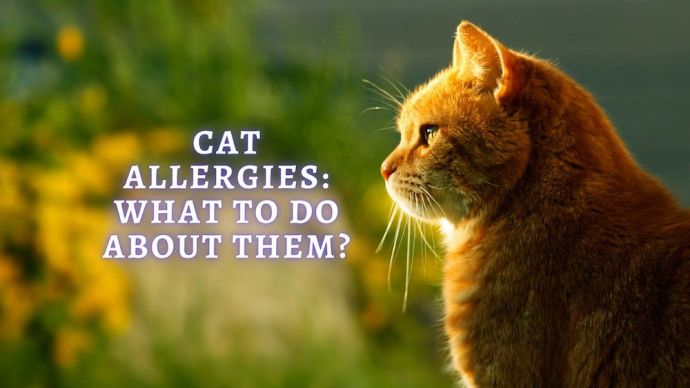 Cat Veterinary Tips Cat Allergies: Symptoms, Causes, Testing, Treatment, and Prevention (Vet Advice)
Cat Veterinary Tips Cat Allergies: Symptoms, Causes, Testing, Treatment, and Prevention (Vet Advice) - 315
- 0
 Cat Care Why Does My Cat Attack My Legs? 10 Reasons Why and What To Do About It (Vet-Approved Advice)
Cat Care Why Does My Cat Attack My Legs? 10 Reasons Why and What To Do About It (Vet-Approved Advice) - 45879
- 21
 Cat Veterinary Tips Cat Stomach Gurgling: Vet Advice on Why is Your Cat Stomach Gurgling?
Cat Veterinary Tips Cat Stomach Gurgling: Vet Advice on Why is Your Cat Stomach Gurgling? - 36204
- 4
 Cat Veterinary Tips My Cat Lost its Voice: Can Cats get Laryngitis? (Vet Advice)
Cat Veterinary Tips My Cat Lost its Voice: Can Cats get Laryngitis? (Vet Advice) - 23498
- 13











